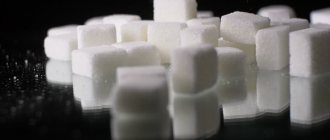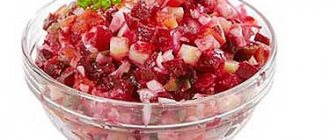Classification of fats
If you are sure that fats are harmful, then I hasten to disappoint you - they are simply necessary for the efficient functioning of our entire body. Fats can be of plant or animal origin. According to the type of acid, fats are divided into the following types:
- saturated;
- unsaturated.
The latter arouse our interest. In turn, they are classified into polyunsaturated and monounsaturated.
We'll talk about the former later, but monounsaturated ones are sources of Omega-9. This type of fatty acid has many tasks, for example, they stabilize sugar and cholesterol levels, increase the body’s defenses, and fight inflammatory processes. What foods do we know that contain these fats? These are nuts, olive oil, grape oil, sesame seeds and others.
Healthy fats
Since fat has been demonized, we've increasingly turned to sugar, refined carbohydrates, and processed foods instead.
Like 11
11000
Fat is a reluctant villain. It is he who is associated in our minds with extra pounds and volumes. Most of us are sure that in order not to accumulate fat, we need to at least stop eating it! However, don’t rush to conclusions: there is fat that is not only good for health, but also helps lower cholesterol levels, and also - attention! - get rid of old fat deposits. What foods contain this “magic” fat? Scientists have proven that the “right” fat - namely, unsaturated fatty acids - helps destroy even “petrified” fat deposits. The most generous sources of unsaturated fat are avocados, olive oil, some types of fish, and nuts. Bad fats and good fats Growth and development of the body, protection of internal organs, support of the elasticity of cell membranes, assistance in the absorption of food - fat copes with all these tasks perfectly! It is believed that in a balanced diet its share can be up to 30% (in grams this is up to 100 g for men and up to 80 g for women, depending on body type and lifestyle). But do not rush with a clear conscience to pounce on the largest portion of fries. All men are created equal, but fats are not. The two large groups, saturated and unsaturated fats, have very different dietary roles. Most fats look and taste very similar, especially in prepared foods, but let's take a closer look at them. Saturated fats, or fats containing saturated fatty acids, remain solid at room temperature. They are called saturated because of the presence of hydrogen in their chemical structure, the atoms of which tightly bind together the carbon chains in the acid molecule. That is why, in order to melt a product containing a large amount of saturated fatty acids, it must be heated properly. Accordingly, it is more difficult for the body to process such fatty acids - inside a person, of course, it is warm, but not as much as in a frying pan. All solid fats, such as lard, butter and palm oil, are rich in saturated acids. It is wrong to consider them one hundred percent harmful - solid fats contain fat-soluble vitamins and vitamin-like substances, but they should be eaten thoughtfully and in doses, remembering that saturated fats provoke an increase in the level of “bad” cholesterol - low-density lipoprotein (LDL). It is this fat, and not any conventional fat, that causes diseases of the cardiovascular system. Unsaturated fats, in turn, are divided into fats with polyunsaturated and monounsaturated fatty acids. Their chemical structure is more complex than saturated fats, but the body does not care about formulas; unsaturated fats are absorbed much easier. There is almost no hydrogen in polyunsaturated fatty acids, so they remain liquid under any conditions, but in monounsaturated fatty acids its level is slightly higher, and the fats containing them thicken when cooled (this effect is easy to see in the example of olive oil left in the refrigerator). Saturated fatty acids are found mainly in animal products, meat and milk. However, in plant foods they can be found in oils: coconut, palm, shea butter. When choosing a product that contains large quantities of harmful, but still necessary for life, saturated fat, pay attention to its source: farm beef is preferable to ice cream from a fast food chain. We get monounsaturated fatty acids from certain types of vegetable oil, nuts, seeds, avocados, and olives. Polyunsaturated ones are also found in most vegetable oils, as well as in fish and other sea creatures. These products are an essential part of a healthy eating program. War of fats: the battlefield is man And now attention, the main secret: unsaturated fatty acids not only provide the body with “good” cholesterol, high-density lipoprotein (HDL), but also with its help constantly reduce the level of harmful LDL. That is, if you eat something containing saturated fats, it must also contain unsaturated fats, and then the “good” fat will win over the “bad” fat! Published studies have confirmed that “high-quality” fatty acids speed up metabolism; with their participation, food is digested better and absorbed fully. With constant dosed intake of the right fat, the body stops concentrating on creating its reserves. Scientists clarify: dietary healthy unsaturated fat activates a special protein PPAR-alpha, which burns existing fat in the subcutaneous area of the abdomen, thighs, buttocks, and prevents the accumulation of fat in the liver. There is another secret to healthy fat. Studies have shown that unsaturated fatty acids have the ability to stabilize blood sugar levels, which means that when consumed, you are protected from sudden outbreaks of hunger that often accompany the consumption of fast food and sweets. Other researchers compared the sensations of people who dined on meals high in unsaturated fatty acids and low in unsaturated fatty acids at the same calorie content. It turned out that two hours after lunch, those who received unsaturated fats felt quite comfortable, and their comrades, who were left without healthy fatty acids, were already hungry. Here are high-fat foods that are actually incredibly nutritious and healthy: Avocados. Avocado is different from most fruits: it is rich in fats, not carbohydrates. Indeed, about 77 percent of avocados' calories come from fat, making the fruit higher in fat than most animal products. The main fatty acid contained in it is oleic. It is also predominant in olive oil. Avocados can be one of the best sources of potassium in your diet - they contain 40% more potassium than bananas. Additionally, avocados are an excellent source of fiber that can lower LDL cholesterol and triglycerides while raising HDL (“good”) cholesterol levels. Although the fat and calorie content is quite high, research suggests that people who include avocados in their diet tend to weigh less and have less belly fat. Conclusion: Avocado is a fruit that provides 77% of calories to the body from fat. It is an excellent source of potassium and fiber and has significant beneficial effects on cardiovascular health. Dark chocolate. Dark chocolate is one of those rare foods that is both delicious and healthy. Its fat content is quite high - about 65% of calories. Dark chocolate also contains 11% fiber and more than 50% of the recommended daily value of iron, magnesium, copper and manganese. Chocolate is rich in antioxidants: their content in this product is even higher than in blueberries. Moreover, some of the antioxidants contained in it have powerful biological activity and can lower blood pressure and protect against the oxidation of LDL cholesterol in the blood. Research has also shown that among people who eat dark chocolate five times a week or more, the death rate from heart disease is almost half that of those who do not consume the product. Dark chocolate also improves brain function and protects the skin from damage caused by sun exposure. The main thing is to make sure that you choose high-quality dark chocolate that contains at least 70 percent cocoa. Conclusion: Dark chocolate is high in fat, nutrients and antioxidants and is very beneficial for improving cardiovascular health. Fatty fish. Fatty fish is one of the few animal products whose benefits are beyond doubt. Oily fish include salmon, trout, mackerel, sardines and herring. This fish supplies the cardiovascular system with Omega-3 fatty acids, high-quality protein and other essential nutrients. Studies have shown that those who eat fish tend to be in better health and have a lower risk of heart disease, depression, dementia and other common diseases. If for some reason you don't eat fish, take fish oil. Conclusion: Fatty fish are rich in important nutrients, especially Omega-3 fatty acids. Eating fatty fish improves health and reduces the risk of various diseases. Nuts. Nuts are extremely healthy. It's an excellent plant-based source of protein, high in healthy fats and fiber, as well as vitamin E and magnesium, a mineral that most people don't get enough of. Studies have shown that people who eat nuts have a lower risk of various diseases, including obesity, heart disease and type 2 diabetes. The most beneficial for health: almonds, walnuts, macadamia nuts. Conclusion: Nuts are rich in healthy fats, proteins, vitamin E, magnesium and are one of the best plant-based sources of protein. Olive oil. Olive oil contains vitamins E and K and is rich in powerful antioxidants, some of which can fight inflammation and help prevent LDL oxidation in the blood. Additionally, olive oil helps lower blood pressure, improve cholesterol levels, and avoid risks associated with heart disease. Conclusion: Olive oil has many health benefits and is effective against cardiovascular diseases. Coconuts and coconut oil. Coconuts and coconut oil are the richest sources of saturated fat, containing approximately 90%. And despite this, people who consume coconuts in large quantities enjoy excellent health and practically do not suffer from heart disease. Coconut fats are actually different from most other types of fats and are composed primarily of medium chain fatty acids. Research suggests that medium-chain fats suppress appetite, helping people eat fewer calories, improve metabolism, and help lose belly fat. These types of fats may also be beneficial for people with Alzheimer's disease. Conclusion: Coconuts are rich in medium-chain fatty acids, which are metabolized differently than other fats. They reduce appetite, increase fat burning, and have many other health benefits. Low-fat yogurt. In fact, full-fat yogurt is very healthy. It contains the same important nutrients as other full-fat dairy products. But in addition to them, such yogurt is rich in probiotic bacteria, which can have powerful beneficial effects on health. Research has shown that yogurt can significantly improve digestive health and even help fight heart disease and obesity. Just make sure you choose real low-fat yogurt by reading the label carefully. Unfortunately, yoghurts with low fat content and high sugar content are quite often found on store shelves. Try to avoid such products.
- 540
More details - 178 134
More details
- 216
More details
- 198 186
More details
Dear readers! Thank you for reading our blog! Receive the most interesting publications once a month by subscribing. We invite new readers to try our water for free; on your first order, choose 12 bottles (2 packs) of BioVita mineral water or Stelmas drinking water. Operators will contact you and clarify the details. Tel. 8 (800) 100-15-15
* Promotion for Moscow, Moscow Region, St. Petersburg, Leningrad Region
Thanks for subscribing to our newsletter
Polyunsaturated - what is the advantage
Polyunsaturated fats (PUFAs) belong to a complex of fatty acids that are designed to improve metabolism, affect inflammation that occurs in the body, and also provide it with amino acids and vitamins. There are two groups in this class – Omega-3 and Omega-6.
It is important to understand that the human body is not able to produce these acids on its own, that is, they must be replenished through special products.
What is the difference between these and other Omegas? Chemical structure and tasks that they must cope with in our body.
More specifically, it looks like this:
- Omega-3 – provides protection against inflammation and serves to prevent heart disease;
- Omega-6 serves to stabilize cholesterol and is responsible for the cleanliness and high functionality of the epidermis.
Both are the basis for nerve cells. As a result of certain actions, the body converts fatty acids into elements that are necessary for the renewal of the body and effective metabolic processes.
Polyunsaturated fats - which foods are they found in?
When they talk about compounds that contain the most polyunsaturated fats, they mean fish and creatures of the deep sea. At the same time, fish dishes are the main supplier of Omega-3, but the share of Omega-6 is negligible and there is no Omega-9 at all.
It looks something like this.
But there are some specifics in fish products that you should know about. The amount of Omega-3 is directly related to the habitat of the fish. For example, sea creatures that consume algae will give you the largest amount of Omega-3, but for river or pond fish this parameter will be half as much, since they feed on compound feed.
Two words about fish oil. This is a useful product in the form of oil, which contains the same proportion of acids as in fish of a particular area. In the table you see not only the Omega-3 content of the total weight, but also the daily requirement that should be absorbed by a person. This does not mean that you should eat fish every day; it can be successfully replaced with seafood, as well as other types of fats.
Which oil is better?
In what type of foods can we still find the fatty acids we are interested in? Secondly, these are vegetable oils. Without them it is impossible to cook lunch or season a salad. Moreover, they contain all types of unsaturated acids. Oils can be refined or unrefined. The distribution of the three Omegas - 3, 6 and 9 - is different.
Now you see that the ratio of Omega-3 and Omega-6 is different, but when you fry fish in sunflower oil, this parameter changes significantly. This way your body can get both types of fat.
But if you consume only 1 teaspoon of flaxseed oil per day, you can easily replenish the content of polyunsaturated fats in the body.
Other foods rich in this element include:
- meat and eggs;
- nuts and oil seeds;
- vegetables.
By correctly calculating the body's need for polyunsaturated elements, you can easily obtain everything that is necessary for the functioning of all organs and systems.
List of foods rich in saturated fat
Large consumption of foods rich in saturated fats inevitably leads to the development of cardiovascular diseases (hypertension, atherosclerosis, etc.). Doctors strongly recommend monitoring your daily fat intake, most of which is best obtained from polyunsaturated fatty acids.
The main sources of saturated fatty acids are the following foods:
- dairy products with a high mass fraction of fat - milk, cheese, butter, cream, cottage cheese, sour cream, etc. It is worth taking into account that saturated fats of dairy origin can cause an allergic reaction;
- meat products - pork, beef, poultry (chicken, duck, turkey), sausages, bacon, frankfurters;
- confectionery products – chocolate, ice cream, sweets, desserts;
- bakery products;
- fast food;
- sauces.
This is not a complete list of foods that should be limited in consumption. People prone to obesity, leading a sedentary lifestyle and with high cholesterol levels should limit their fat intake to 10-15 grams per day.









